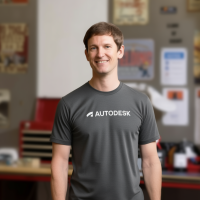We’re excited to introduce the new Smooth Navigation (beta) feature in the APS Viewer, designed to reduce those pesky ‘mesh popping’ and flickering issues!
UPDATE: This is the third post in a three-part series on enhancements to the APS Viewer.
Viewer Performance Update:
Part 1 - Speedier SVF2 Loading
Part 2 - OPFS Caching
Part 3 - Smooth Navigation (beta)
Introducing "Smooth Navigation"
We’re excited to introduce the new Smooth Navigation (beta) feature in the APS Viewer, designed to reduce those pesky ‘mesh popping’ and flickering issues!
Load the latest viewer with v7.99 or above using:
<script src="https://developer.api.autodesk.com/modelderivative/v2/viewers/7.99/viewer3D.min.js"></script>
<link href="https://developer.api.autodesk.com/modelderivative/v2/viewers/7.99/style.min.css" rel="stylesheet">And make sure that "Large Model Experience" switch is "ON", under the setting panel (play the video below, for instructions).
Also, to remember to refresh the browser, whenever you toggle this switch.
Here's a quick video comparing the before and after:
| Before | After |
DEMO: https://codepen.io/wallabyway/pen/zYVpOdG
How does it Work ?
Our new mesh consolidation technique groups meshes based on size and spatial regions, leveraging a hierarchical level of detail.
During this beta phase, “Smooth Navigation” is rolling out as a client-side feature. It begins optimizing once all the meshes have finished downloading into the OPFS cache. You’ll notice the progress bar change to “optimizing.” Once optimization is complete, get ready to enjoy minimal flickering and popping!
Stay Tuned for the "GA Release"
As with any beta, there’s room for improvement. To improve second load speed, we will soon cache the 'optimizer' result.
Currently, the optimizer runs on the client side and uses extra browser memory, so it's not ideal for mobile devices at the moment. We’re working on this.
To reduce the extra memory used, we will dynamically run time optimize and memory cull based on the camera frustum. Eventually the optimizer, will run server side and when this happens, expect faster initial load times and much lower memory usage. More to come for the General Availability Release.
Got a comment about this feature ? Let us know: https://autodeskfeedback.az1.qualtrics.com/jfe/form/SV_ctKl6ejLF2KxlEa
Follow me on @twitter !

